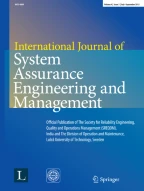Abstract
This research paper describes an integrated framework based on both the ‘Technology–Organization–Environment (TOE) framework’ and ‘Diffusion of Innovation (DoI) theory’. The study explores the noteworthy factors and sub-factors which are pertinent for the adoption of cloud computing in the Ethiopian Higher Education (EHE) sector. The technology literature herein was based on technology adoption frameworks and theories which were studied in order to identify a set of factors and sub-factors relevant to cloud computing adoption. It resulted in conceptualizing an integrated TOE–DoI framework for cloud computing adoption in higher education at the university in Ethiopia and in developing its reliable measures. Accordingly, a quantitative study was done with a questionnaire survey comprising 500 respondents in connection with 4 factors (technological, organizational, environmental and socio-cultural). Consequently, the cloud computing adoption in Ethiopia was established using factors and concepts adopted from the study. It confirmed that the TOE–DoI approach to higher education in Ethiopia is authenticated. Thus, the four factors’ reliability statistics validated with a Cronbach’s alpha a = 0.739, 0.712, 0.761, 0.841, and Cronbach’s alpha ‘a’ based on standard items a = 0.740, 0.713, 0.762 and 0.842 for technology, organizational, environmental, and socio-cultural factors. This indicates that scaling the four aspects therein suggests profound evidence to determine a cloud computing adoption in EHE with TOE–DoI integration.
Similar content being viewed by others
Explore related subjects
Discover the latest articles, news and stories from top researchers in related subjects.References
Ajzen I (1991) The theory of planned behavior. Organ Behav Human Decis Process 50(2):179–211
Alshamaila Y, Papagiannidis S, Li F (2013) Cloud computing adoption by SMEs in the north east of England: a multi-perspective framework. J Enterp Inf Manag 26(3):250–275
Baker J (2012) The technology–organization–environment framework. Integrated series in information system: information system theory, vol. 28, Springer. pp 231–245. https://doi.org/10.1007/978-1-4419-6108-2_12
Bhardwaj T, Kumar M, Sharma SC (2018) Megh: a private cloud provisioning various IaaS and SaaS. Adv Intell Syst Comput 584:485–494
Davis FD (1989) Perceived usefulness, perceived ease of use, and user acceptance of information technology. MIS Q 13(3):319
Fishbein M, Ajzen I (1975) Belief, attitude, intention, and behavior: an introduction to theory and research. Addison-Wesley Pub. Co., Reading, Mass; Don Mills, Ontario
Filiopoulou E, Mitropoulou P, Michalakelis C (2014) SMEs in the cloud: the impact of cloud adoption on economic growth and development. ICEIRD, p 11
García-Sánchez E, García-Morales VJ, Bolívar-Ramos MT (2017) The influence of top management support for ICTs on organisational performance through knowledge acquisition, transfer, and utilisation. Rev Manag Sci 11(1):19–51
Gens M, Shirer F (2011) I agree Public IT Cloud services spending to reach $72.9 Billion in 2015, capturing nearly half of net new spending growth in five key product segments, according to IDC
Hassan H, Herry M, Nasir M, Khairudin N, Adon I (2017) Factors influencing cloud computing adoption in small and medium enterprises. J ICT 16(1):21–41
Hiran KK, Doshi R, Rathi R (2014) Security & privacy issues of cloud & grid computing networks. Int J Comput Sci Appl 4(1):83–91
Hiran KK, Henten A, Shrivas MK, Doshi R (2018) Hybrid educloud model in higher education: The case of Sub-Saharan Africa, Ethiopia. IEEE Int Conf Adapt Sci Technol ICAST 2018:1–9
Hiran KK, Doshi R, Fagbola DT, Mahrishi M (2019) Cloud computing: concepts, architecture and applications with real-world examples and case studies. BPB Publications, New Delhi, India
Ifijeh G (2014) Adoption of digital preservation methods for theses in Nigerian Academic Libraries: applications and implications. J Acad Librariansh 40(3–4):399–404
Njenga K, Garg L, Bhardwaj AK, Prakash V, Bawa S (2019) The cloud computing adoption in higher learning institutions in Kenya: Hindering factors and recommendations for the way forward. Telemat Inf 38:225–246
Oliver RL (2018) A cognitive model of the antecedents and consequences of satisfaction decisions. J Mark Res 17(4):460–469
Oliveira T, Thomas M, Espadanal M (2014) Assessing the determinants of cloud computing adoption: an analysis of the manufacturing and services sectors. Inf Manag 51(5):497–510
Rogers EM (1995) Diffusion of innovations. 4th edn. The Free Press, New York
Schnabel HSSI (2018) Money and trust: lessons from the 1620s for money in the digital age. BIS Working Papers, 2018. Available: https://www.bis.org/publ/work698.htm. Accessed Feb 2018
Tesfaye S, Bedada B, Mesay Y (2016) Impact of improved wheat technology adoption on productivity and income in Ethiopia. Afr Crop Sci J 24(1):127
Tornatzky L, Fleischer M (1990) The process of technology innovation. Lexington Books, Lexington, MA
Venkatesh V (2000) Determinants of perceived ease of use: integrating control, intrinsic motivation, and emotion into the technology acceptance model. Inf Syst Res 11(4):342–365
Venkatesh V, Bala H (2008) Technology acceptance model 3 and a research agenda on interventions. Decis Sci 39(2):273–315
Venkatesh V, Davis FD (2000) A theoretical extension of the technology acceptance model: four longitudinal field studies. Manage Sci 46(2):186–204
Venkatesh V, Morris MG, Davis FD, Davis GB (2003) User acceptance of information technology: toward a unified view. MIS Q 27:425–478
Author information
Authors and Affiliations
Corresponding author
Additional information
Publisher's Note
Springer Nature remains neutral with regard to jurisdictional claims in published maps and institutional affiliations.
Rights and permissions
About this article
Cite this article
Hiran, K.K., Henten, A. An integrated TOE–DoI framework for cloud computing adoption in the higher education sector: case study of Sub-Saharan Africa, Ethiopia. Int J Syst Assur Eng Manag 11, 441–449 (2020). https://doi.org/10.1007/s13198-019-00872-z
Received:
Revised:
Published:
Issue Date:
DOI: https://doi.org/10.1007/s13198-019-00872-z
